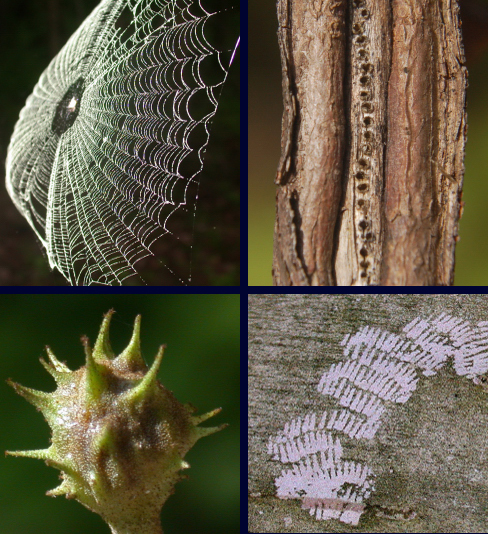 NorthernNaturalists Home
,
Invertebrate Tracking
,
Workshops
,
Art
,
About Us
NorthernNaturalists Home
,
Invertebrate Tracking
,
Workshops
,
Art
,
About Us
| p. 151 | The Andrena species that left this colorful deposit has been identified as A. crataegi. Click here to see the bee. | |
| p. 151 | The syrphid larva that left this tarlike smear has been identified as an Epistrophe species. Click here to see it. | |
| p. 154 | Correction: Although Drosophila sigmoides still appears to be a valid name, it evidently no longer applies to a spittlebug fly. The fruit flies associated with spittlebug spittle belong to the genus Cladochaeta, and you can download a 326-page monograph devoted to them here. | |
| p. 156 | Correction: The caterpillars that made these droppings were Haploa contigua, not H. confusa. | |
| p. 158 | Correction: Question marks (Polygonia interrogationis) do NOT construct frass chains. Thanks to Keith Wolfe for bringing this to our attention. | |
| p. 172 | Correction: The pine bark adelgid is native to North America, not introduced. | |
| p. 173 | Gregory A. Evans has examined the nymphal exuviae from the pictured whiteflies on arrowwood, and has determined them to be Trialeurodes pergandei. | |
| p. 176 | Correction: Although it's hard to see any detail in this photo, mycologist Larry Millman recognized these black spots as the anamorphic phase of a Lophodermium fungus. Here is what actual pinyon needle scale nymphs would look like when magnified. | |
Images ©Charley Eiseman/Noah Charney